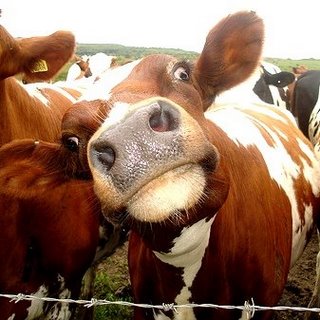As you know, I work for an Ag NGO. But, up until recently, I hadn't been doing too much with agriculture. Mainly, I'd been working on the Special Projects Team (actually, we're now calling ourselves the Innovations Team because it sounds fancier). My day-to-day was spent on products like solar lights, with only a fraction of time allocated to what would eventually be my first foray into the world of agriculture.
 |
| Cows! Dairy cows, to be precise. |
Cows are a beast. And I do mean that in both senses of the word. There are so many things to account for in figuring out cattle husbandry in Kenya - we're talking breed, shelter, fodder, milk collection, vaccinations, and so on. There are about a million tiny little moving pieces that all have to be smartly, succinctly, and simply accounted for. And, short of becoming a vet, how can I figure out if anything we do actually has any impact?
I decided to measure milk production. And weight gain. Simple enough, no? (No.)
Take a second to consider how you would go about capturing that kind of information if you were me. (I'd like to take this opportunity to inform the reader that I am a child of the suburbs; I think I touched a cow once at the Ohio State Fair petting zoo; and I majored in econ - so stop thinking that I have some sort of leg up on you in this little puzzle.)
Sure, milk is a challenge. But, it's not nearly so taxing as weighing the darned thing. I don't know about you, but I certainly don't have one of these bad boys lying around the backyard:
Even if I did, I don't know how I'd get it down some of the gnarly dirt "roads" around here and I don't even want to think about how much money that would end up costing. So, you can see my conundrum.
I spent a week typing in various combinations of "estimate," "cow," "weight," and "frustration" into my trusty Google Search tab.
Thanks to the University of Arizona Ag Department and the Piedmontese Breeders Association, I found a tape measure method. Yay me! As for my survey agents - they're thrilled. (That's a lie. This method might be significantly more cost effective and, logistically, much less of a nightmare... but the cow-kick potentiality has definitely increased... and they're paid like 2 bucks a day.*)
Good thing there's workers' comp in Kenya.
*Note: Before you start hating on me for putting people in danger for 2 dollars a day - that's not a bad wage for a casual around here and cows are really pretty docile - we're relatively certain no one will get kicked. Calm down.


That cow in the first picture looks crazy!
ReplyDelete